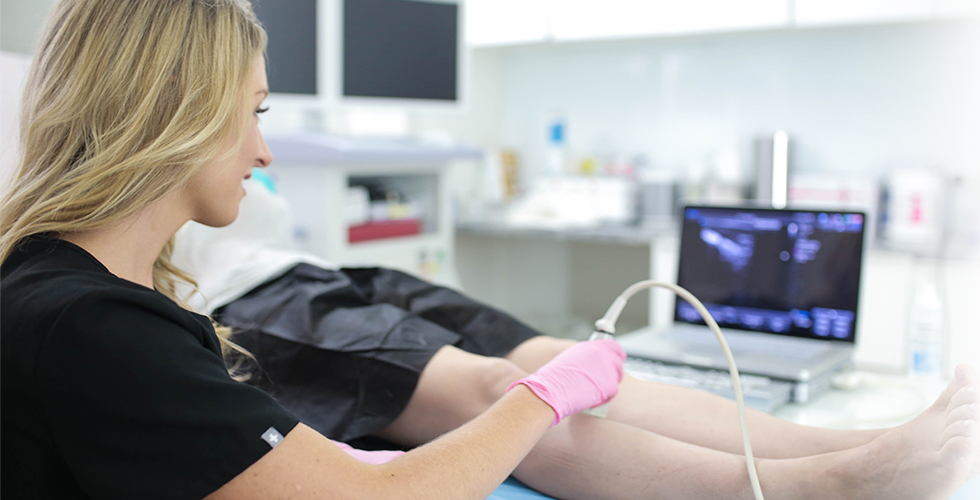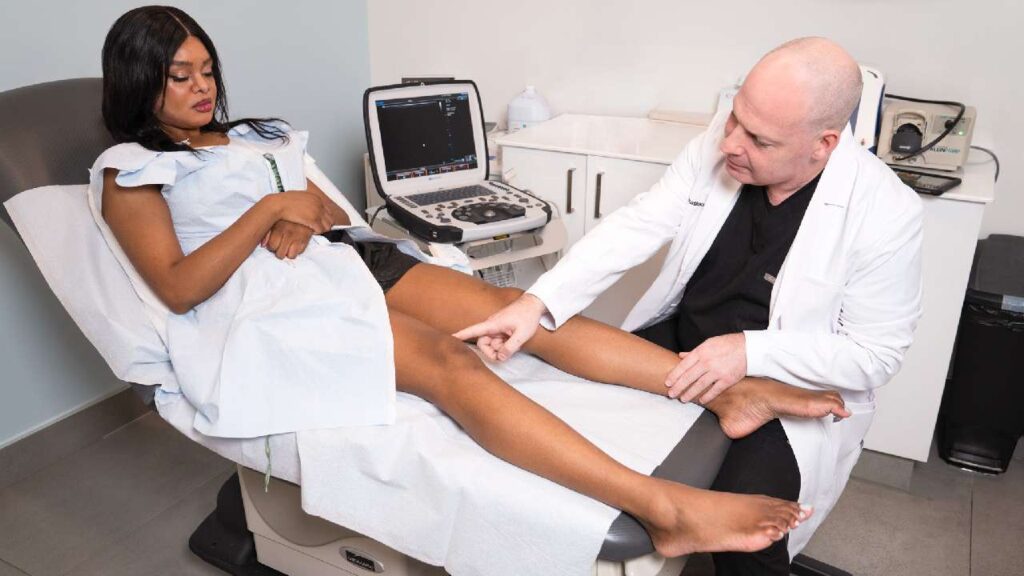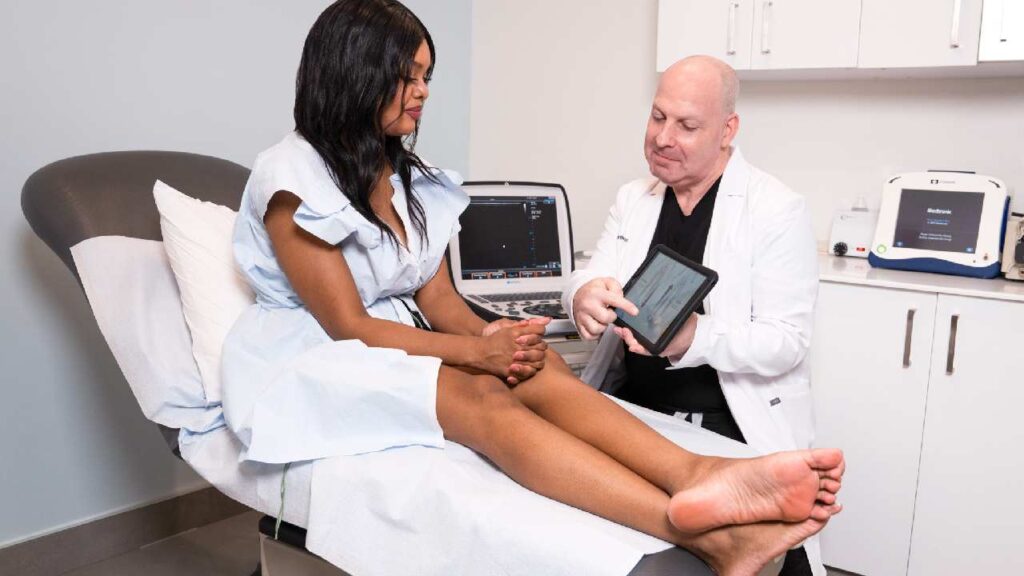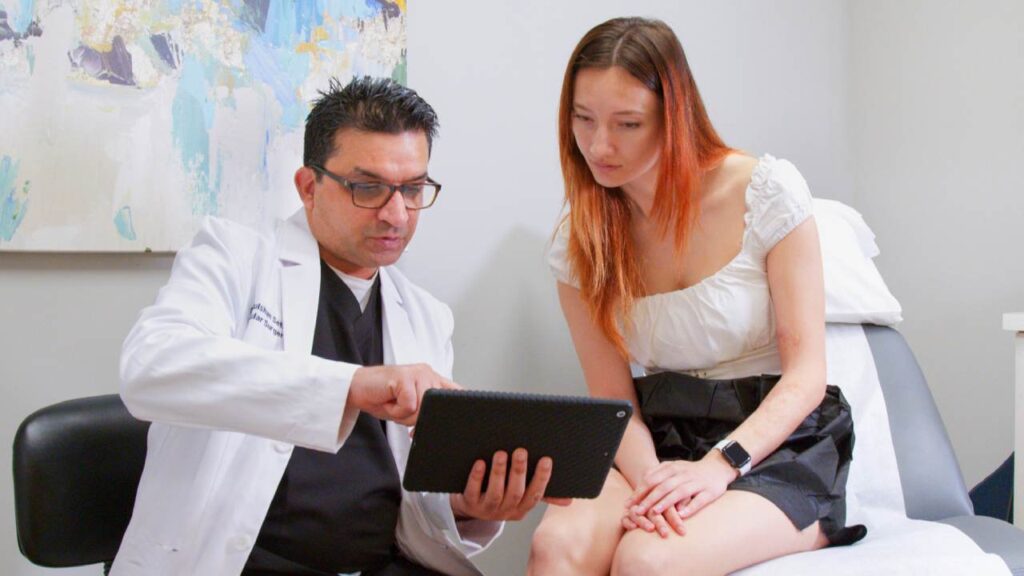Step One: Choose a Minimally Invasive Vein Clinic in NYC
The first step when seeking vein treatment in New York City is to choose a qualified vein clinic. Minimally invasive vein specialists are the best choice for most patients. Cosmetic vein clinics can’t treat varicose veins, large spider veins in the legs, or the cause of damaged veins. Vascular surgery clinics are too invasive for most spider and varicose veins. Surgeons now operate primarily on arteries and other vascular conditions. So, book an appointment with minimally invasive vein specialists in New York for optimal vein care. These procedures treat the vein directly, unlike cosmetic procedures. But they close the vein inside the body, rather than surgically extracting it. That minimizes risk, pain, complications, cost, and recovery time.

Step Two: Select Board Certified NYC Vein Doctors
Once you’ve selected a New York City vein clinic, choose from their board certified vein doctors. Some people who treat veins are neither board certified nor medical doctors. You don’t want to trust your vascular health to an unqualified practitioner. Vein treatment is incredibly safe with a trained vein expert. But in the wrong hands, vein treatment can be ineffective or even dangerous. Choose a doctor who’s board certified by the ABVLM or the ABMS in a vascular specialty. This indicates that they’ve spent extra time studying the vascular system and have voluntarily completed an exam that verifies their expertise.
Step Three: Get Free Insurance Verification
For affordable vein care, ask whether the vein doctor accepts your insurance. Our insurance specialists can verify coverage on your behalf. We submit all the paperwork and any corresponding documents your carrier requests, such as images of your veins or the vein doctor’s notes about your symptoms. We ensure that you know what treatment will cost before your appointment. For many of our patients, there are no out-of-pocket expenses.
Step Four: Have the Doctor Examine Your Leg Veins
When you come for your initial consultation, the vein doctor will examine your leg veins visually. They might also conduct vein mapping tests with an ultrasound device to learn whether there are blockages in deeper veins. They’ll order any blood tests or other lab work they need to make your diagnosis.
Step Five: Discuss Your Medical History and Symptoms
The vein specialist will also ask you about your symptoms. Leg swelling, cramping, heaviness, fatigue, itching, and pain are all associated with spider veins and varicose veins. You’ll also discuss your medical history, specifically any history of blood clots, vein disease, or prior vein treatments.
Step Six: Receive an Overview of Your Vein Treatment Options
The vein doctor will then provide an overview of your vein treatment options. These are determined based on your exam and medical history, as well as your preferences. Our team of award-winning vein specialists has several options to choose from. For most patients, it will either be sclerotherapy, radiofrequency ablation, endovenous laser ablation, mechanochemical ablation, or vein adhesives. Each of our procedures is outpatient and completed in 15 to 30 minutes, on average. Patients can walk around right afterward and even drive themselves home or back to work. No matter which minimally invasive vein treatment you choose, it won’t inhibit your life or require downtime for recovery.
Step Seven: The Doctor Will Curate a Personalized Vein Plan
People come from all over the world for our innovative vein solutions. We often curate a personalized vein care plan for patients with complicated veins. If you have both varicose veins and spider veins, we might use radiofrequency ablation on the larger varicose veins, and an injection of sclerotherapy on the small spider veins. We always ensure that patients get the flawless results they seek. Many patients only need one appointment to resolve their vein issues. If you have widespread vein damage or complicated veins, you might need additional appointments to treat each blood vessel.
Step Eight: Come in for Your Quick Vein Procedure
The day of your minimally invasive procedure is quick and easy. Since non-surgical vein treatments don’t require general anesthesia, you don’t need to stop eating or drinking before your appointment. In fact, your doctor might recommend extra hydration to make your veins more visible if you’re having an ultrasound-guided procedure. Most patients can wear their own clothing, depending on the vein’s location. Loose clothing is easiest in case the doctor needs to roll your sleeve or pant leg up to access the vein.
You’ll relax with your leg elevated if you’re treating a leg vein. The vein specialist will clean the skin above the vein, apply a topical numbing cream if needed, and insert the treatment needle or catheter. Once it’s positioned on the vein, they’ll inject the sclerosant or adhesive. If you’re having a thermal treatment like radiofrequency ablation or endovenous laser ablation, they’ll inject tumescent anesthesia around the vein first to protect the surrounding area. Then they’ll activate the laser or radiofrequency. Within 15 to 30 minutes, you’ll be done.
Step Nine: Resume Your Daily Activities with Healthy Veins
After treatment, you can immediately resume your normal daily activities. Many patients go right back to work. Moderate exercise is allowed and encouraged for most patients. Daily walks are helpful to encourage blood flow into healthy veins near the sealed blood vessel. You should save strenuous exercise and heavy lifting until your vein doctor approves it. This differs depending on the type of treatment you have and your medical history. Since there are no large wounds, you don’t need to bother with wound care. Most procedures allow you to bathe or shower within 24 hours of treatment.
Healing and recovery are quick with minimally invasive vein treatments. You don’t need to take time off work. The vein is closed immediately, and it will begin fading within the first week. Final results will take a few weeks, or up to a few months for larger veins. If you’re ready to pursue vein treatment in New York City, book an appointment at our FiDi vein clinic near DeLury Square or our Midtown vein clinic near the Library Hotel. We look forward to meeting you!





